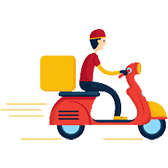
Memory:
Registers comprise memories. Short-term facts are kept in what is referred to as memory. In the memory, a record serves as one storing space. The memory location is another name for the storage location. The address is used to locate memory locations. A memory's capacity is the maximum amount of bits it can hold.

There are three types of memory:
1. Primary Memory
2. Secondary Memory
3. Cache Memory
Storage:
Long-term data storage and access are made possible by storage. Nothing changes, and the data stays the same on the hard drive; everything is pulled off into the main memory. Your operating system, apps, and files can all be accessed and stored in storage for an endless amount of time.
For Example:
1. HDD
2. SDD
3. SD Cards
4. CD, DVD, etc
Let's see the difference between Memory And Storage:
|
S.NO. |
MEMORY |
STORAGE |
|
1. |
Memory is an electronic component capable of temporarily storing data and information. |
Storage refers to physical storage devices. |
|
2. |
It is temporary data storage. |
Data is stored both temporarily and permanently. |
|
3. |
Memory is faster than storage. |
Storage is slower than memory. |
|
4. |
Memory can access data and information instantly. |
Storage cannot access or modify data as fast as the memory. |
|
5. |
It is a collection of computer chips installed in memory modules. |
It is a technology consisting of the core components of a computer. |
|
6. |
When the computer loses power, Data is lost. |
No data is lost. |
|
7. |
The memory module is more expensive than storage. |
Storage devices are cheaper. |
|
8. |
Their size is not much more significant and goes up to GBs. |
Their size is much larger than memory and goes up to TBs. |
Memory
Two modules of RAM in the laptop in the next person's hand
The part of your computer that enables quick data access is called "memory." This part might be recognized as DRAM or dynamic random-access memory. Many tasks your computer carries involve accessing data held in its short-term memory. Editing a document, loading apps, and web browsing are a few such actions. The amount of RAM placed on your computer affects the speed and performance of your system.
Also Read: How to Shut Down Laptop through Keyboard in Windows 10 or 11
Also Read: How To Split Screen In Laptop
In the case of a desk and filing cabinet, the desk stands for the computer's memory. You keep the things you need to utilize on your desk right away. On the other hand, a desk's space restrictions mean that not much can be stored on it. Study up on Kingston Memory.
Storage
A dismantled laptop PC with an SSD storage drive on top of it
Storage is the part of your computer that enables you to store and access data for a lengthy period, as opposed to memory, which describes where short-term data is located. Storage typically takes the form of a hard drive or solid-state drive. Your operating system, apps, and files are always kept in storage. The storage speed influences how quickly your system can boot up, load, and retrieve your saved information because computers need to write and read data from the storage system.
The filing cabinet represents your computer's storage, while the desk represents memory. It contains things that should be saved and kept but isn't always required for quick access. The filing cabinet's size enables it to accommodate many items.
Storage differs from memory because the hold is not cleared when a computer is shut off. On the other hand, storage is unaffected by how frequently you turn off your computer. Accordingly, in the analogy of the desk and filing cabinet, any documents still on your desk after you leave the office will be discarded. Your filing cabinet will still contain everything in it. Learn more about USB flash drives, memory, and SSDs.
Frequently Asked Questions
Popular Services
- MacBook Battery Replacement Cost
- HP Printer Repair in Delhi NCR
- Dell Laptop Repair
- HP Laptop Repair
- Samsung Laptop Repair
- Lenovo Laptop Repair
- MacBook Repair
- Acer Laptop Repair
- Sony Vaio Laptop Repair
- Microsoft Surface Repair
- Asus Laptop Repair
- MSI Laptop Repair
- Fujitsu Laptop Repair
- Toshiba Laptop Repair
- HP Printer Repair Pune
- Microsoft Surface Battery Replacement
- Microsoft Surface Screen Replacement




